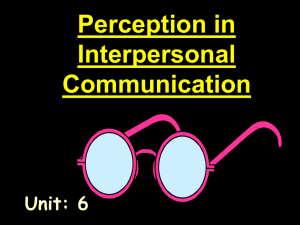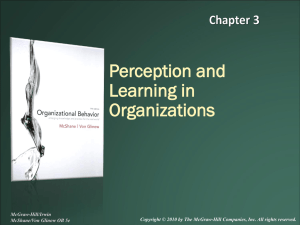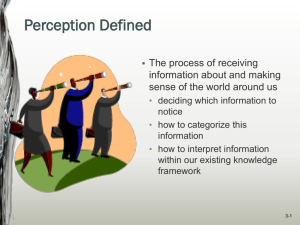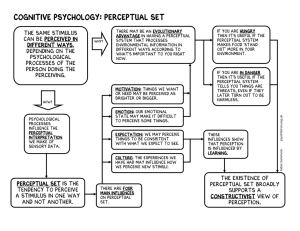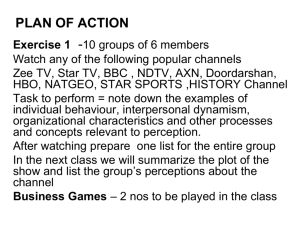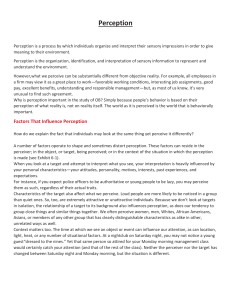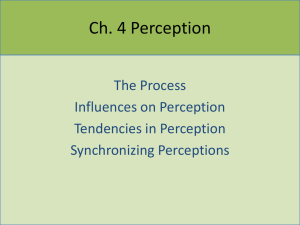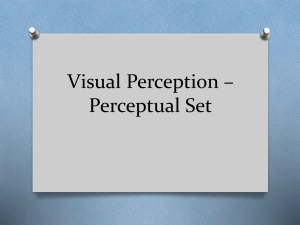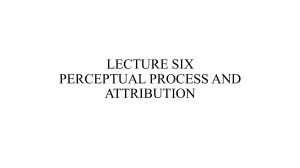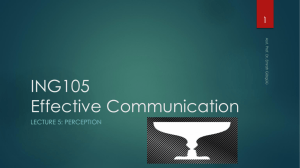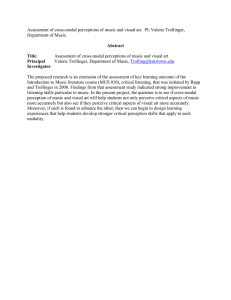Ch. 4-Perception
advertisement
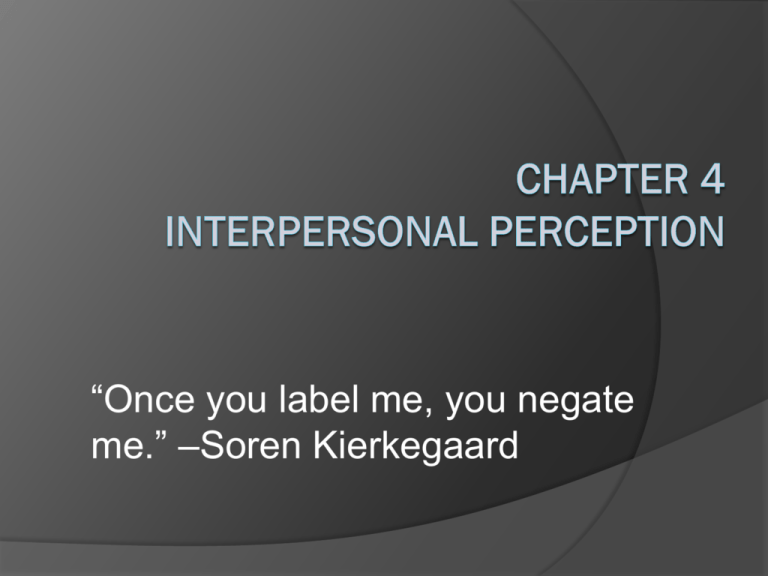
“Once you label me, you negate me.” –Soren Kierkegaard Perception The ongoing process of making meaning from the things we experience in our environment Interpersonal Perception When we apply perception process to people and relationships Perception is a Process • Selection—first step of process • The process in which mind and body help you choose certain stimuli to attend to. • Three Characteristics of Selection • 1. Stimulus is unusual or unexpected—which makes it stand out • 2. Repetition—how frequently we’re exposed to a stimulus • 3. Intensity of stimulus affects how much we notice it Perception is a Process • Organization--second step • Helps us make sense of info by using constructs • Constructs: • Physical—appearance, objective & subjective • Role—social or professional position • Interaction—a person’s behavior • Psychological—a person’s thoughts and feelings Perception is a Process • Interpretation—third step • Three phases of interpretation • 1. Your personal experience with the person • 2. Your knowledge of the person • 3. Your relationship with the person Influences on Perceptual Accuracy Physiological states and traits Physiology—mechanical and biochemical ways our bodies work States—conditions that are temporary Traits—conditions that are ongoing Culture and co-culture Cultural values and norms Co-culture we belong to (more in Ch. 2) Influences on Perceptual Accuracy Social roles Set of behaviors that are expected of a person in a particular social situation Fundamental Force in Perception: Stereotyping Stereotyping Generalizations about a group or category of people that can have powerful influences on how we perceive those people Stereotyping Process of Stereotyping 1. Identify the group 2. Recall a generalization about the group 3. Apply the generalization to that person Fundamental Forces in Perception The Primacy Effect—first impressions The Recency Effect—recent impressions Perceptual Set—predisposition to perceive only what we want or expect Egocentrism—lack the ability to take another person’s perspective Perceptual Forces Positivity Bias—we pay the most attention to positive information Negativity Bias--tendency to weigh negative information more heavily than positive How we Explain What We Perceive Attribution Theory Ways we Attribute (answer “Why?”): ○ Locus—where the cause of behavior is located—could be inside us or outside ○ Stability—is the cause stable, unstable, permanent, semi-permanent, or easily changed? Explain What We Perceive Controllability – 8 attributes of Rudeness Chart on page 126 Refers to the concept of stability Attribution Errors Self-serving Bias We attribute our successes to internal causes but failures to external causes Fundamental Attribution Error We attribute other people’s behavior to internal, not external, causes Overattribution We single out a few characteristics about a person and attribute her/his behavior to those characteristics Improving Perceptual Abilities Be Mindful of Your Perceptions Know yourself and your biases Focus on the other person’s characteristics Consider the context Improving Perceptual Abilities Check your Perceptions Separate interpretations from facts Generate alternative perceptions Engage in perception-checking behaviors Revise your perceptions as needed


